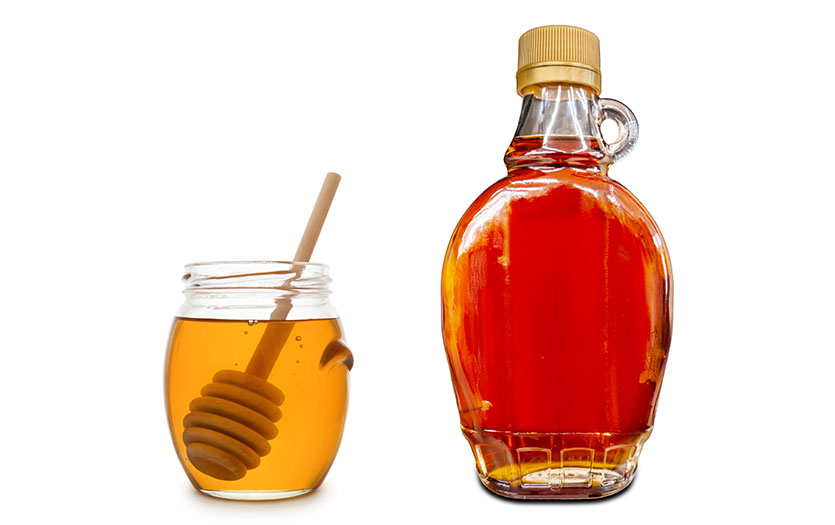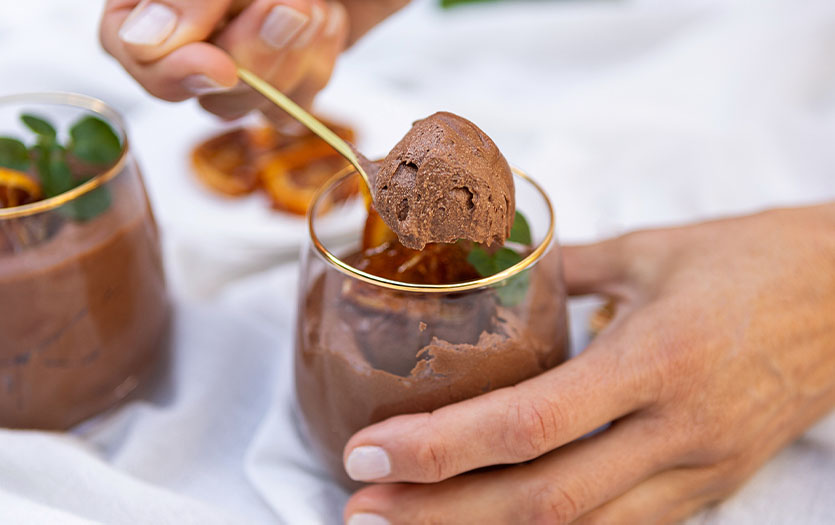.jpg)
This post was written based on a Powered by Plants presentation hosted by Kristin Gerhardstein, MD, PPG – Family Medicine and Primary Care; Lydia Hall, RDN, Center for Healthy Living; and Kathy Wehrle, RDN, community outreach dietitian, Parkview Health.
We're often told that animal products are the best sources of protein, so it's no wonder the most common concern people voice when transitioning to a whole-food plant-based (WFPB) diet is whether they can meet their protein needs without relying on meat, eggs or dairy. Replacing these familiar foods may seem intimidating, but when you know which plant-based options to have in your rotation and how to incorporate them into meals, you can easily meet your nutritional needs. Below, we'll explain how.
What is protein and why do we need it?
Protein is one of the three macronutrients that provide energy to our bodies and contributes to various crucial functions, including:
-
supporting the growth and maintenance of tissues
-
providing structure to cells and tissues
-
maintaining fluid balance
-
boosting the immune system
-
transporting and storing nutrients
-
promoting feelings of fullness and satiety
-
improving blood glucose control
This nutrient is made up of building blocks called amino acids. There are 20 amino acids in total, 9 of which are essential—meaning our bodies cannot produce them, so they must be obtained from the food we eat.
How much protein do you really need?
The amount of protein needed per day can vary based on body weight, activity level and age, but in general, it should account for 10 – 15% of total calories consumed. For example, if you're eating a 2000-calorie diet, you should aim for 200–300 calories from protein, which is approximately 50-75 grams per day.
Another way to determine how much protein you need is based on your body weight. The recommended dietary allowance for protein is 0.8 grams per kilogram (g/kg) or 0.36 grams per pound (g/lb.) protein per day. To calculate, simply multiply your weight by 0.36 to estimate your grams per day (g/d).
An individual who weighs 160 lbs. x 0.36 g/lb. would need approximately 57.6 g/day of protein. If following a WFPB diet, consider adding 10% more protein to account for lower protein digestibility, which would equate to 64 g/d.
Keep in mind that this is only a general recommendation. Some people, such as those with inflammatory conditions, adults over the age of 65 and endurance or strength athletes, may require more. For specific guidance, speak with your primary care physician or schedule a free one-time appointment with one of our registered dietitians to address your nutritional needs.
Plant-based sources of protein
When following the WFPB diet, it is important to vary and prioritize your protein sources. All plant foods contain all 9 essential amino acids, but some contain higher amounts of certain amino acids than others. However, when there is good variety in the diet, you can get adequate amounts of all amino acids.
These foods are protein-dense and typically considered the foundations of WFPB meals:
-
Legumes: Peas and beans, including kidney beans, pinto beans, white beans, black beans, lima beans, black-eyed peas, garbanzo beans (chickpeas), split peas, lentils, edamame and tofu.
-
Consume at least 2 – 3 servings each day. A single serving size is ½ cup of cooked beans
-
-
Nuts and seeds: Almonds, pistachios, walnuts, pecans, nut butters, pumpkin seeds, sunflower seeds, chia seeds and flax seeds.
-
Consume 1 – 2 servings each day. A single serving size is 1 ounce of raw or dry-roasted nuts, or 2 tablespoons of nut butter.
-
As the National Research Council (US) Committee on Diet and Health points out, the body does not need dietary protein, but rather the essential amino acids. You can add these foods to your meals to make them whole proteins:
-
Histidine: spinach, eggplant, tomato, fermented foods, citrus, kiwi, banana, strawberry and pineapple
-
Isoleucine: beans, seeds, lentils, chard, sweet corn, peas, brussel sprouts, spinach, avocado, strawberry, kiwi and banana
-
Leucine: tofu, navy beans, pumpkin seeds, peanuts, lentils, oats, hemp, spirulina, avocado, guava and jackfruit
-
Lysine: beans, quinoa, lentils, tempeh, pumpkin seeds, pistachio, soy milk, avocado, pear, dried apricots and dried mango
-
Methionine: oats, quinoa, buckwheat, sunflower seeds, hemp seeds, kiwi, oranges, avocado and peaches
-
Phenylalanine: chickpeas, beans, lentils, kiwi, goji, grapefruit and banana
-
Tryptophan: leafy greens, mushrooms, broccoli, peas, soybeans, pumpkin seeds, plantains, pineapple, bananas, kiwi, plums and tomatoes
-
Valine: peas, beans, carob, soy, fenugreek, nuts, seeds, banana, guava, papaya and pineapple
A protein-packed day of eating
Here are some recipes to show you what a full day of WFPB meals could look like and the nutrient totals:
Breakfast - Oatmeal Breakfast Bake with Berries and Almonds
Snack - Smashed Chickpea Avocado Dip (2 servings)
Lunch - Kale and Farro Salad with Orange-Avocado Dressing
Snack - Vegan Berry Banana Smoothie Bowl
Dinner - Vegan Spaghetti Marinara with Lentil Balls
Estimated nutrition facts: 2073 calories | 363 g carbs (70%) | 62 g protein (12%) | 50 g fat (22%) | 54.3 g fiber
Looking for more meal inspiration? Visit our Pinterest profile for a variety of healthful recipes to add to your repertoire.
Save the date!
The next Powered by Plants meet up is Thursday, December 12, from 5:30 – 6:30 p.m. Join the Center for Healthy Living for our end-of-year WFPB potluck. Please bring a plant-based dish to share along with copies of the recipe to pass out to attendees. This event is in-person only. Make sure to check out our classes and events here in early December for registration details.



